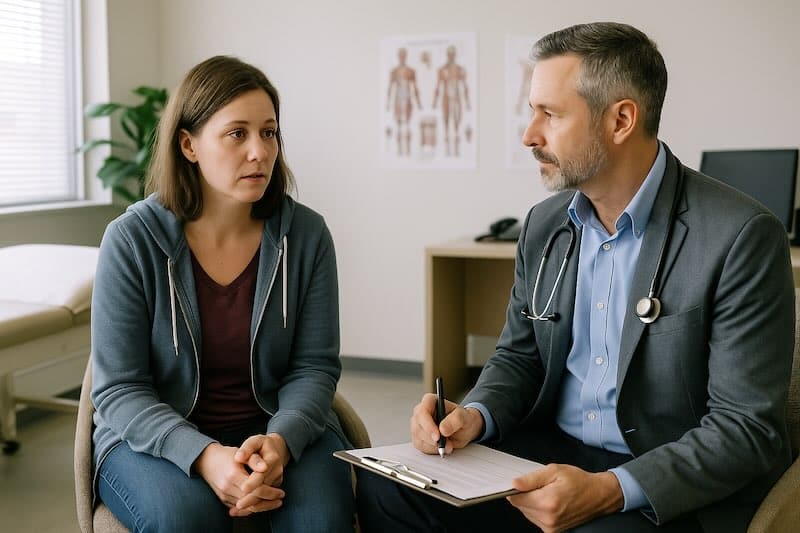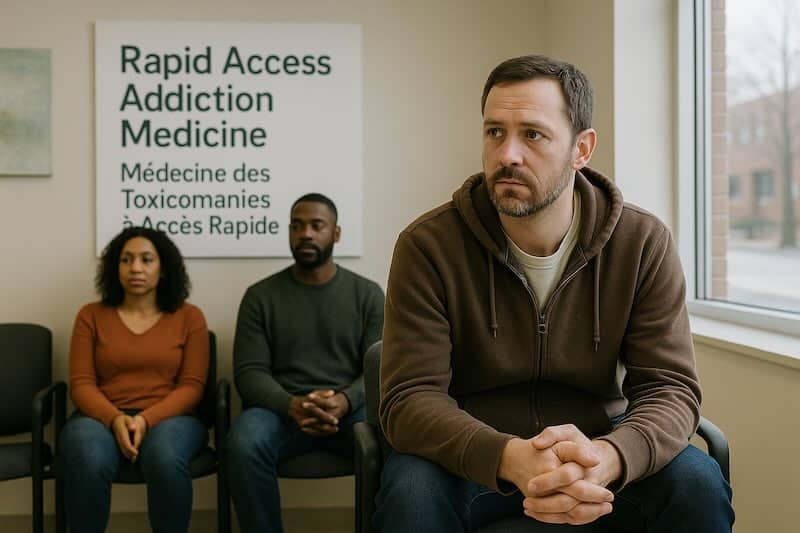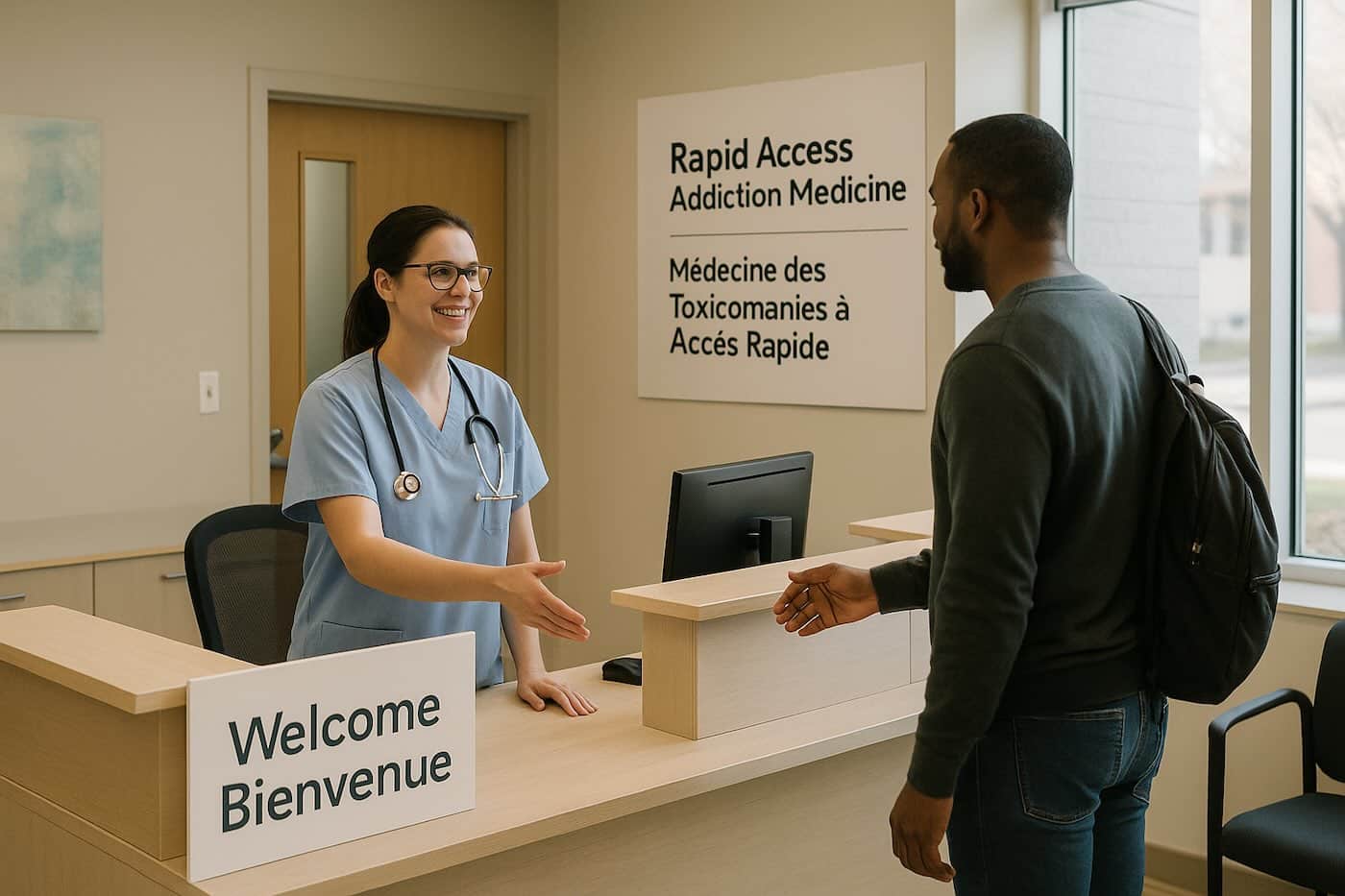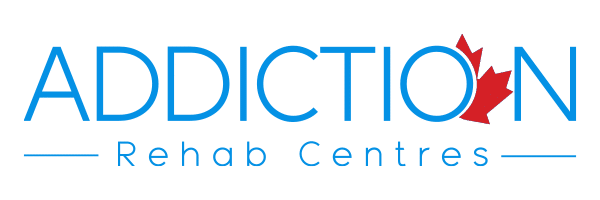Raam Clinic, Rapid Access Addiction Medicine in Canada
Perhaps this is obvious, but when someone is ready to ask for help, waiting even a week feels impossible. That is exactly why a Raam Clinic, Rapid Access Addiction Medicine clinic, exists, to lower barriers, to meet people the same day, or very quickly, and to start treatment that sticks.
What is a Raam Clinic?
A Raam Clinic, which stands for Rapid Access Addiction Medicine, is a low barrier, walk in or quick access service designed for people seeking help with substance use, alcohol or drugs, and related mental health needs. No complicated referral, typically no long waitlist, and in many regions, no out of pocket cost. You meet a clinician trained in addiction medicine, often the same day. The visit feels practical, not ceremonial. I like that, because real life is messy, and treatment should adapt.
Common services include brief assessment, same day stabilization, medication initiation like buprenorphine naloxone, Suboxone, long acting naltrexone, support for alcohol withdrawal, thiamine, symptom management, linkage to counseling, harm reduction supplies, naloxone training, and warm handoffs to community or intensive programs. Some clinics also offer virtual or phone follow ups, which, I think, helps people who juggle work or childcare.
Why Rapid Access works
Speed matters. Motivation fluctuates, ambivalence happens, and if support is not available quickly, people drift. Raam Clinics solve for this with shorter intakes, clear protocols, and a focus on first steps that reduce harm right now. It is not a magic wand, of course, but the combination of timely medication, nonjudgmental conversation, and concrete next steps, it changes trajectories.


Who RAAM is for, and a realistic note
If you are using alcohol heavily, waking up shaky, or worried about seizure risk, a RAAM team can assess and start a safe plan, sometimes including medication to ease withdrawal. If opioids are involved, including fentanyl, heroin, or pain pills, same day initiation of buprenorphine naloxone is often possible. Some clinics support micro induction, a gentler approach when abstaining first is difficult. People using stimulants, methamphetamine or cocaine, also come for harm reduction and craving management. Results vary, naturally, and plans change, but quick contact usually helps.
There is a mild contradiction in public messaging about recovery, structure versus flexibility. RAAM leans flexible. It lets you start small, then, if needed, step into more structured care, day programs, residential, counseling. I think that balance is healthy, even if it is imperfect.
On privacy and stigma
Walk in services can feel exposed. Good RAAM teams design space and language that reduce shame, small things like how reception greets you, or how forms are worded, make a difference. If you felt judged before, perhaps try again, different clinic, different vibe.
| Feature | RAAM Clinic, Rapid Access Addiction Medicine | Traditional Referral Pathway |
|---|---|---|
| Access speed | Same day or within a few days, walk in or quick booking Fast access | Weeks to months, timing depends on referral queues Longer wait |
| Referral needed | Usually not required, self directed access is common | Often required from primary care or emergency department |
| First visit goals | Stabilize quickly, start medications, harm reduction, plan next steps | Comprehensive assessment first, program start happens later |
| Cost | Typically publicly covered in Canada, verify regional policies | Varies by program, some public coverage, some private fees |
| Follow up | Short term follow up, rapid titration, warm handoff to community care | Program based cadence, availability can be limited by waitlists |
| Visit format | Walk in hours, phone or video follow ups offered by many sites | Scheduled appointments, virtual options vary by provider |
| Best suited for | People ready now, post overdose or post ER visit, new or recurring concerns | People who can wait for intake, those seeking highly structured programs |
RAAM Clinic Services in Canada, what to expect
Walking into a RAAM Clinic, Rapid Access Addiction Medicine, feels simple by design. A short intake, consent, a few safety questions, and you are with a clinician. No ceremony, minimal paperwork, and, I think, that is why the model works. You get practical help first, then a plan you can actually follow. Some visits are brief, 30 minutes, others take longer. It depends, and that is okay.
Same day assessment and stabilization
The team screens for immediate risks, overdose history, suicidality, severe withdrawal, pregnancy, or medical red flags. Basic vitals, a quick substance use history, and a focused mental health check. If alcohol withdrawal is likely, you get a monitored plan, thiamine, and a clear safety script. If opioid withdrawal is present or near, you discuss buprenorphine naloxone starts, sometimes a micro start when abstaining first is hard. Patients keep asking, will I feel normal. The honest answer, perhaps not immediately, but within a day or two most people feel steadier.
Medication assisted treatment
RAAM clinicians initiate or optimize medications that reduce cravings and harm. For opioids, buprenorphine naloxone is common. Some regions provide methadone through partner clinics. For alcohol, naltrexone, acamprosate, and sometimes disulfiram when appropriate. Adjuncts like clonidine, anti nausea agents, sleep support, these are used thoughtfully. Stimulant use disorder has fewer pharmacologic tools, but targeted approaches and structure do help. Results vary, and that is normal.


Harm reduction, practical and nonjudgmental
Expect naloxone training with a take home kit. Safer use education, overdose response steps, and, where available, fentanyl test strips. Small habits matter, never use alone, test doses, carry naloxone. If you have been judged elsewhere, a RAAM visit may feel different, kinder.
Mental health support and brief counseling
Co occurring concerns are common, anxiety, depression, trauma. RAAM teams screen, stabilize, and coordinate. Brief interventions like motivational interviewing or contingency management are used, not as a lecture, more like a conversation that nudges change. Longer therapy is arranged through community partners.
Virtual care and follow up
Many RAAM clinics offer phone or video follow ups, which reduces missed appointments. Quick lab reviews, dose adjustments, and check ins happen without travel. Reminders by text or email are common, simple things that keep momentum going.
| Situation | Likely RAAM first step | Typical follow up |
|---|---|---|
| Post overdose or ER visit High urgency | Same day assessment, naloxone kit, buprenorphine start if indicated, stabilization plan | 1 to 3 day check in, linkage to community opioid agonist therapy clinic, safety review |
| Heavy daily drinking with morning shakes Withdrawal risk | CIWA guided plan, thiamine, symptom relief, consider naltrexone or acamprosate, safety script | Weekly follow up until stable, counseling referral, gradual medication optimization |
| Using fentanyl and worried about withdrawal Micro start friendly | Micro start buprenorphine plan, harm reduction supplies, overdose prevention education | Short interval titration visits, ongoing opioid agonist therapy support, pharmacy coordination |
| Stimulant use, sleep and anxiety issues Targeted supports | Sleep hygiene plan, targeted symptom meds when appropriate, counseling and structure | Structured day program or contingency management, mental health follow up as needed |
| Pregnant and using opioids Priority access | Priority assessment, opioid agonist therapy optimization, coordinated obstetric care | Shared care with prenatal services, frequent monitoring, postpartum plan in place |
| Rural or remote Virtual friendly | Virtual intake, local pharmacy partnership, mailed or pickup harm reduction supplies | Tele follow ups, occasional in person visits when required, community resource linkage |
Talk To One Of Our Specialists By Calling 1-855-885-4747
Provincial availability in Canada, where to start
Most provinces now run some form of Raam Clinic, Rapid Access Addiction Medicine, or a close equivalent. The names vary a little, rapid access addiction clinic, opioid dependency program intake, short stay withdrawal management access point, yet the spirit is the same, quick entry, practical care. Urban centers usually offer multiple sites with staggered hours, smaller communities lean on blended models, a primary care hub with RAAM hours one or two days a week, plus virtual visits. I have seen people worry, what if I show up at the wrong time. Honest answer, it happens, staff will usually redirect you kindly, and book the soonest slot.
If you are not sure where to go, start with the directory and filter by province or territory, then by service type, walk in, outpatient, virtual. It trims the noise and puts phone numbers in front of you, which is what you need when energy is limited.
• Find addiction and mental health clinics in Canada
In Ontario, RAAM is well known, clinics are embedded in hospitals and community health sites. Manitoba operates RAAM programs with walk in hours and short follow up blocks. British Columbia and Alberta run rapid access addiction medicine through health authorities and partner clinics, same idea, different scheduling. Saskatchewan and Nova Scotia have similar access points. The takeaway, terminology and hours differ, access speed and low barrier principles are shared.
How RAAM connects to detox and residential care
RAAM is the front door, not the whole house. When a higher level of care is needed, withdrawal management, detox, residential treatment, day program, the clinician does a warm handoff, ideally while you are still in the room. That can mean calling the program together, booking an intake date, and writing a bridging prescription so you are stable while you wait. If alcohol withdrawal risk is high, the team may route you to medical detox the same day. If you are starting buprenorphine naloxone and feel nervous, a micro start with clear day by day steps reduces the cliff effect, then you scale up once comfortable.
You can help the handoff by bringing what you have, a photo ID, a list of meds, your pharmacy details, and, if you are comfortable, a support person. Families often ask how to help. Small, practical things matter, rides to the first two visits, keeping naloxone on hand, and gentle check ins that focus on safety rather than perfection.
Insurance and costs, quick facts
In most Canadian settings, RAAM visits are publicly funded. Medications are usually covered by provincial drug plans, private benefits, or a mix, details depend on age, income, and plan rules. Some counseling or specialty programs may have wait times, sometimes a fee for private options exists, ask before you commit. Pharmacies can help navigate coverage for buprenorphine naloxone or naltrexone, and RAAM clinicians know the local pathways, they will tell you straight if something needs prior authorization.
If cost is a barrier, say so immediately. Teams can adjust, generic formulations, patient assistance programs, or interim strategies like supervised dosing until coverage starts. When in doubt, call the listing you found and ask about fees, eligibility, and hours.
Patient journey case study, the first 72 hours after a RAAM visit
Meet Sam, not the real name, a composite of many stories. Sam uses fentanyl most days, wants to stop, fears withdrawal, and has tried to quit before. A friend mentions Rapid Access Addiction Medicine, a RAAM clinic, and Sam walks in on a Tuesday afternoon. Intake is brief. Vitals are checked. The clinician listens, really listens, and suggests a buprenorphine naloxone micro start, plus a harm reduction kit and clear safety advice. I think what helps most here is the tone, practical, nonjudgmental, do this first, then this.
Before leaving, Sam gets a written plan, a pharmacy picked for fills, and a 48 hour follow up. A text reminder goes out that evening. Small detail, big effect. Motivation wobbles, reminders catch people before they drift.
The first 72 hours, a simple timeline
Sometimes structure is what keeps the wheels on. The plan below is an example, not medical advice, always follow your clinician’s instructions.
| Time | Actions | What to watch |
|---|---|---|
| Day 0, afternoon | Pick up meds, review micro start steps, carry naloxone, save the clinic number. | Nausea, sweats, anxiety. Use the symptom plan you were given. |
| Day 1, morning | Follow dosing card, light meals, hydrate, avoid using alone, keep kit nearby. | Worsening withdrawal, cravings spikes. If unsure, call the RAAM nurse line Support |
| Day 1, evening | Short check in call if scheduled, confirm day 2 doses, plan sleep routine. | Sleep trouble. Use non sedating strategies first, meds only as prescribed. |
| Day 2 | Follow up visit, dose adjustment, add naltrexone if alcohol is also an issue, counseling referral. | Side effects. Report promptly, adjustments are normal in early days. |
| Day 3 | Stabilize dose, pharmacy coordination, set next appointment, confirm safety plan. | Triggers. Identify one or two and choose a small counter move. |
RAAM FAQ
How fast can I be seen
Many sites see new patients the same day, others book within a few days. Calling ahead helps, walking in during posted hours also works.
Do I need a referral
Usually no, self referral is the norm for Rapid Access Addiction Medicine. Bring ID if you can, it speeds up chart creation.
Can I start Suboxone at my first visit
Often yes, either a standard start if you are in withdrawal, or a micro start if abstaining first is hard. You get written steps for the first 24 to 72 hours.
What if I am drinking heavily and feel sick in the mornings
Tell the team exactly what you are experiencing, tremor, nausea, sweats. They will assess seizure risk, start thiamine, treat symptoms, and plan a safe taper or a medical detox handoff if needed.
Can I bring a friend or family member
Yes, and it often helps. A support person can take notes, pick up a naloxone kit, and notice changes you might miss.
What if I use more than one substance
Tell the team everything you use, even if it feels messy. Plans can address alcohol and opioids together, or stimulants and sleep, it just takes honest detail.
Will I have to stop completely on day one
Not always. Some people prefer a micro start for buprenorphine, others focus on reducing alcohol harm first. The goal is safety and momentum, perfection comes later, or maybe not at all, and that can still be success.
How long do RAAM clinics follow patients
Usually short term, a few weeks to a few months. The focus is quick stabilization, then a warm handoff to ongoing care, community OAT, counseling, primary care.
Is virtual care as effective
For many tasks, yes, quick check ins, dose adjustments, lab follow ups. In person visits matter for some assessments, the team will tell you when a visit is better.
What if I had a bad experience before
Say so early. Trauma informed staff will adjust pace, explain steps, and avoid triggers where possible. You deserve that level of care.
Can I switch pharmacies
Yes, but coordinate through the clinic so there is no gap. Pharmacies are partners in stabilization, they keep things moving when energy is low.
Are there age limits
Most RAAM programs see adults. Youth and young adults are linked to age specific services. If you are unsure, call the listing and ask.
Short glossary, clear and human
RAAM, Rapid Access Addiction Medicine
Walk in or fast booked addiction care that starts stabilization quickly.
OAT, opioid agonist therapy
Treatment with buprenorphine naloxone or methadone that reduces cravings and overdose risk.
Micro induction, micro start
A gradual buprenorphine start that overlaps with recent opioid use to lower withdrawal discomfort. It is popular because it feels doable.
CIWA
A scoring tool for alcohol withdrawal, helps guide safe symptom treatment.
Harm reduction
Practical steps that cut risk, naloxone, safer use education, never use alone, test doses.
Warm handoff
A live introduction to the next service, phone call or booking done with you, not handed off to you.
This guide was prepared by an addiction content specialist with input from clinicians who work in Rapid Access Addiction Medicine. We cross-checked model details against common provincial RAAM practices in Canada, hours and names may differ by site, care principles stay the same. We do not provide medical advice here, we explain typical pathways so that first steps feel less intimidating.
Provincial RAAM access in Canada, practical notes and where to start
Below are short, human oriented blurbs for every province. Names and hours vary by site, the core idea stays the same, quick entry, practical care, and warm handoffs. I will keep it plain, a touch conversational, because that is what people read.
Alberta, RAAM style access in cities and regional hubs
In Alberta, Rapid Access Addiction Medicine style clinics operate in major centers, Calgary and Edmonton, and extend through regional health hubs. Walk in hours may rotate, virtual follow ups are common. Typical first steps include same day assessment, buprenorphine naloxone starts, alcohol use support, and harm reduction. If you are in a smaller town, the door often opens through a primary care clinic that hosts RAAM hours one or two days a week, phone ahead if you can.
Try this starting point, find addiction clinics in Alberta. If the first number you call is full, ask for the closest alternative and keep going.
British Columbia, rapid access embedded in community services
British Columbia blends Rapid Access Addiction Medicine with community health centers and hospital based teams. Vancouver, Surrey, Victoria, and Kelowna offer multiple entry points. Same day stabilization plus practical harm reduction is the norm. If you are balancing work or school, virtual check ins help maintain momentum. Medication coverage runs through provincial plans and pharmacies are good at helping with paperwork.
Start here, browse BC outpatient and RAAM listings. If the site you want is closed when you arrive, ask about the next walk in block, staff will usually point you to a nearby option.
Manitoba, well known RAAM programs with walk in blocks
Manitoba’s RAAM programs are widely recognized, with posted walk in hours and short follow up slots. The first visit focuses on safety, symptom relief, and a clear plan for the next 72 hours. You can expect naloxone training on the spot. For alcohol, thiamine and a CIWA guided approach reduce risk, for opioids, standard or micro starts are available, depending on your situation.
You can sift options quickly, view Manitoba clinics and contact info. Bring ID if you have it, it speeds up registration, but do not let that stop you if you are in crisis.
Saskatchewan, straightforward entry through health authority sites
Saskatchewan offers RAAM style access through health authority locations and partner clinics. Regina and Saskatoon have the most predictable hours, smaller communities coordinate through primary care. It is okay to be unsure at the door, say what you use, and what you want to change, the team will map next steps with you. Warm handoffs to detox or day programs are routine when needed.
A quick way to begin, search Saskatchewan addiction services. If transportation is a problem, ask about virtual visits or pharmacy coordination, sometimes small logistics solve big barriers.
Ontario, broad RAAM network with hospital and community sites
Ontario has one of the broadest networks, with RAAM clinics in many cities and towns. Toronto, Ottawa, Hamilton, London, and mid sized centers post walk in times, then offer short interval follow ups. Same day Suboxone starts are common, alcohol withdrawal support is handled with clear safety scripts, and counseling referrals follow quickly. If your motivation is wavering, book the earliest slot you can find, momentum matters more than a perfect plan.
Use a central directory view, find Ontario RAAM and outpatient clinics. If you hit a voicemail, leave a short message and call the next listing too, double booking calls is fine when you need help fast.
Quebec, rapid access within integrated health networks
Quebec offers RAAM style entry through integrated health networks, clinic names vary by region, but the rhythm is similar, quick assessment, harm reduction, and medication starts when appropriate. Montreal and Quebec City have multiple access points. Smaller areas often use community health centers with set walk in blocks and phone triage. If French or English is not your first language, ask about interpretation, many teams can arrange it.
Start here, browse Quebec addiction and mental health listings. If the first clinic is full, ask for the nearest alternative and write the number down before you hang up.
Nova Scotia, practical access through hospital and community sites
In Nova Scotia, rapid access pathways are tied to hospital based teams and community clinics. Halifax has more options, smaller towns lean on scheduled walk in windows and virtual follow ups. First visits focus on safety, symptom relief, and a plan you can actually follow. If alcohol is part of the picture, expect thiamine and a CIWA guided approach.
Use the directory filter, find Nova Scotia outpatient and RAAM style services. If transport is hard, ask about phone or video for the second visit, it keeps momentum going.
New Brunswick, straightforward entry with warm handoffs
New Brunswick mixes walk in blocks with quick booked intakes. The teams aim to stabilize fast, then coordinate counseling, opioid agonist therapy, or detox if needed. It is okay if your goals feel mixed, reduce risk first, then decide on longer steps once you feel steadier.
Start a short list here, New Brunswick addiction services. Call two numbers if you can, the first available slot wins, no need to be precious about it.
Prince Edward Island, small province, coordinated access
PEI concentrates services in fewer locations, which makes coordination important. You will likely speak to a central intake or a clinic that covers a wider catchment. Same day help is still the aim, medication starts and harm reduction happen on the first contact when possible.
Check current options, Prince Edward Island clinics and contacts. If hours are limited, ask the team how to reach on call support between visits.
Newfoundland and Labrador, regional hubs with virtual support
NL uses regional health hubs for RAAM style care. St. John’s has the most predictable hours, other communities run scheduled walk in periods and rely on virtual follow ups to close distance gaps. Pharmacies are helpful partners here, especially for coordination and coverage questions.
Begin with a quick scan, Newfoundland and Labrador addiction listings. If you work offshore or on rotation, mention your schedule, clinics can cluster follow ups around your on shore days.
Yukon, practical rapid access centered in Whitehorse
Yukon services are anchored in Whitehorse with outreach and virtual care for other communities. First visits target stabilization, safety, and clear day by day steps. If travel is a barrier, ask about pharmacy coordination and tele check ins, small logistics often solve big problems.
Use this entry point, Yukon clinics and programs.
Northwest Territories, quick entry through territorial clinics
NWT clinics prioritize quick access, especially in Yellowknife, with coordinated support for smaller communities. Virtual visits and phone follow ups are common. Harm reduction is front and center, naloxone, safer use education, and overdose planning.
Filter here, Northwest Territories addiction services. If you need to travel for an in person visit, ask for the earliest morning slot to pair with same day flights.
Nunavut, tele first, in person when needed
Nunavut relies on telemedicine for much of RAAM style care, with in person support arranged when clinically necessary. The pattern is familiar, quick assessment, medication starts when appropriate, and clear follow up steps. Local health centers help with labs and pharmacy coordination.
Start with a call, Nunavut programs and contacts. If the phone line is busy, try again later in the day, and leave a short voicemail with your number.
